
Fundamentals
The Styling Practices, within Roothea’s ‘living library,’ refers to the intentional shaping, arranging, and adorning of hair. This encompasses a broad spectrum of techniques, from simple detangling and conditioning to intricate braiding, twisting, knotting, and loc-forming. Beyond mere aesthetics, the essence of Styling Practices lies in its profound connection to identity, community, and historical narratives, particularly for those with textured hair.
It is a dialogue between the individual, their hair’s inherent biology, and the ancestral wisdom passed down through generations. The meaning of Styling Practices extends beyond the superficial; it is a declaration of self, a connection to lineage, and a vibrant expression of cultural heritage.
For individuals new to the rich world of textured hair, understanding Styling Practices begins with recognizing that these are not simply fleeting trends. They are deeply rooted traditions, living testaments to resilience and creativity. Each curl, coil, and strand holds a story, a memory of hands that have nurtured and shaped hair for centuries. This foundational understanding allows for an appreciation of the inherent beauty and historical weight carried within textured hair.
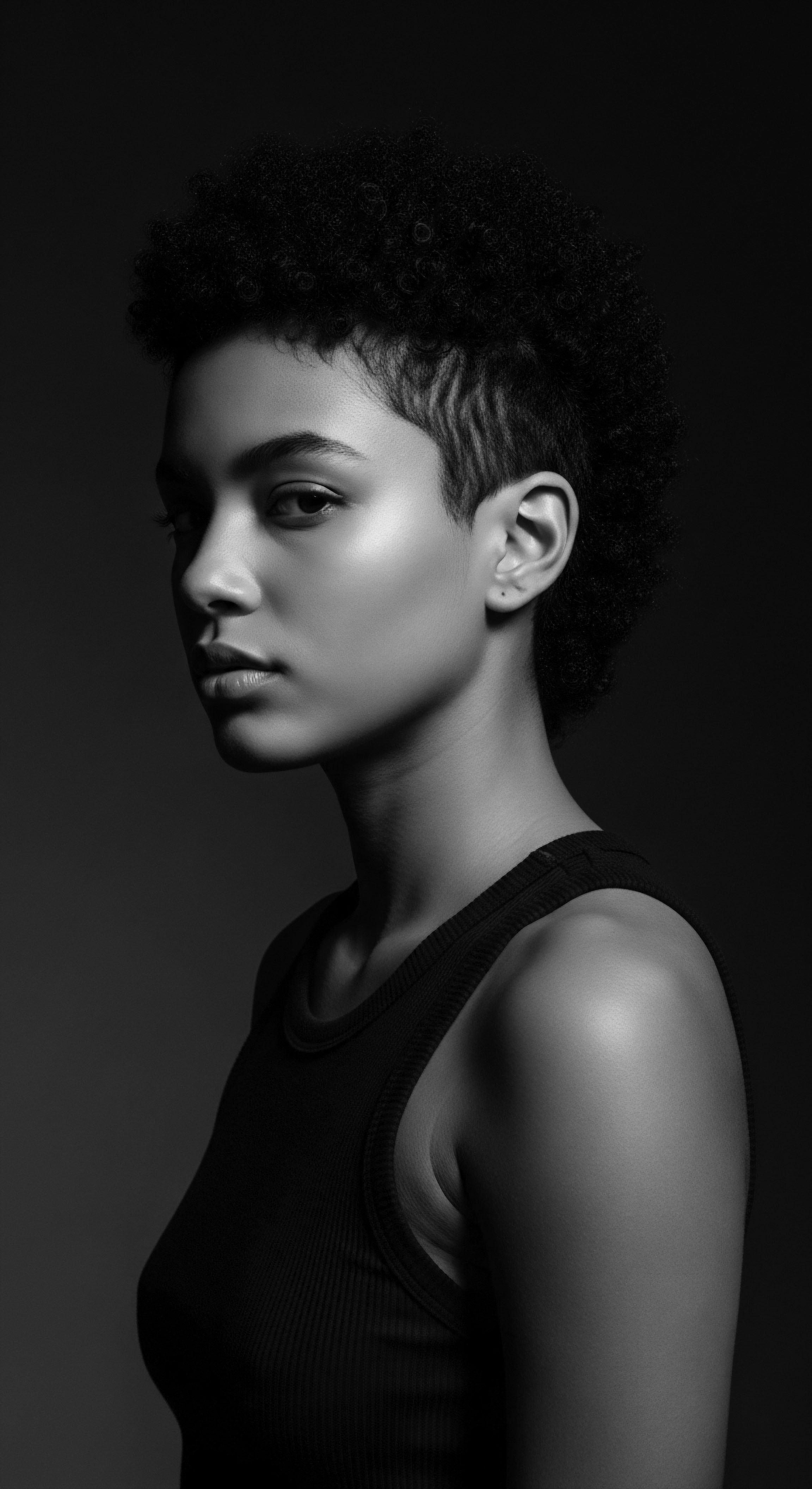
Foundational Elements of Textured Hair Styling
At its core, Styling Practices for textured hair involves working with the unique characteristics of curls and coils. This includes recognizing the natural patterns of hair growth, its porosity, and its response to various elements and products. The foundational approach often involves gentle handling, adequate moisture, and protective methods that honor the hair’s delicate structure.
- Cleansing ❉ This initial step prepares the hair by removing impurities and product buildup, creating a clean canvas for subsequent styling.
- Conditioning ❉ Essential for textured hair, conditioning provides the necessary hydration and slip to aid in detangling and improve manageability.
- Detangling ❉ A crucial practice, often performed with fingers or wide-tooth combs, to gently separate strands and prevent breakage, honoring the hair’s natural curl pattern.
- Sectioning ❉ Dividing hair into manageable parts simplifies the styling process, allowing for more precise application of products and techniques.
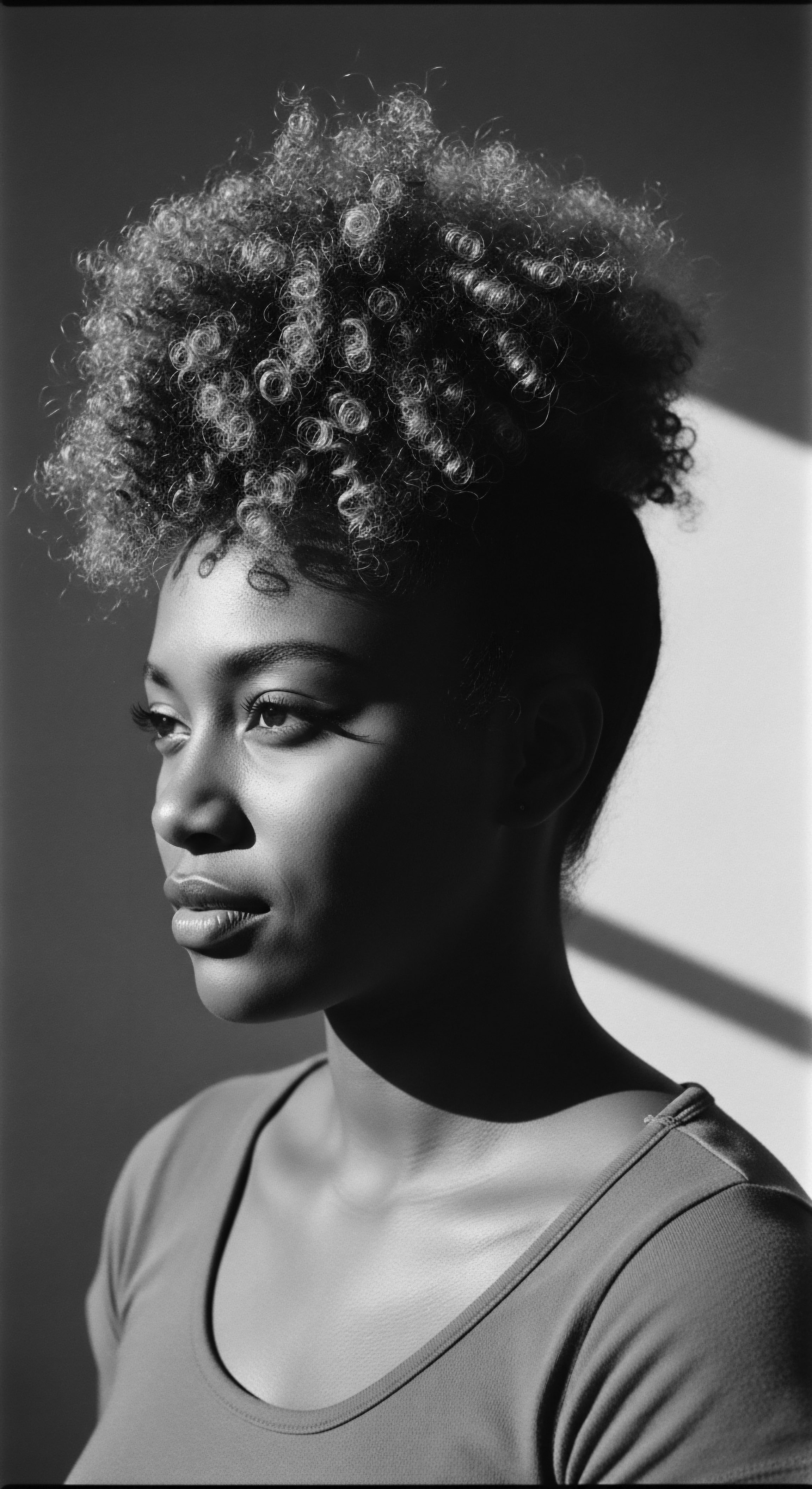
Historical Echoes in Everyday Styling
Even the most basic Styling Practices today carry echoes of ancient traditions. The act of gathering hair, twisting it, or securing it, mirrors ancestral methods of protection and adornment. These practices were not arbitrary; they served practical purposes, like keeping hair tidy during labor, and profound cultural ones, such as signifying social standing or spiritual beliefs. The continuity of these practices, even in simplified forms, speaks to their enduring value and the deep-seated knowledge embedded within them.
Styling Practices for textured hair are not merely cosmetic; they are living expressions of identity, resilience, and a profound connection to ancestral heritage.
The journey into understanding Styling Practices for textured hair is an invitation to connect with a legacy of care, artistry, and self-expression. It is a gentle reminder that every twist and coil is a testament to a vibrant past and a celebrated present.

Intermediate
Moving beyond the foundational aspects, an intermediate comprehension of Styling Practices delves into the intricate interplay between historical precedent, cultural meaning, and the scientific understanding of textured hair. This level of exploration reveals how styling transcends mere grooming to become a powerful medium for communication, resistance, and communal bonding. The meaning of Styling Practices deepens here, encompassing its role as a living archive of Black and mixed-race experiences, where each technique carries a story of survival, celebration, and ingenuity.
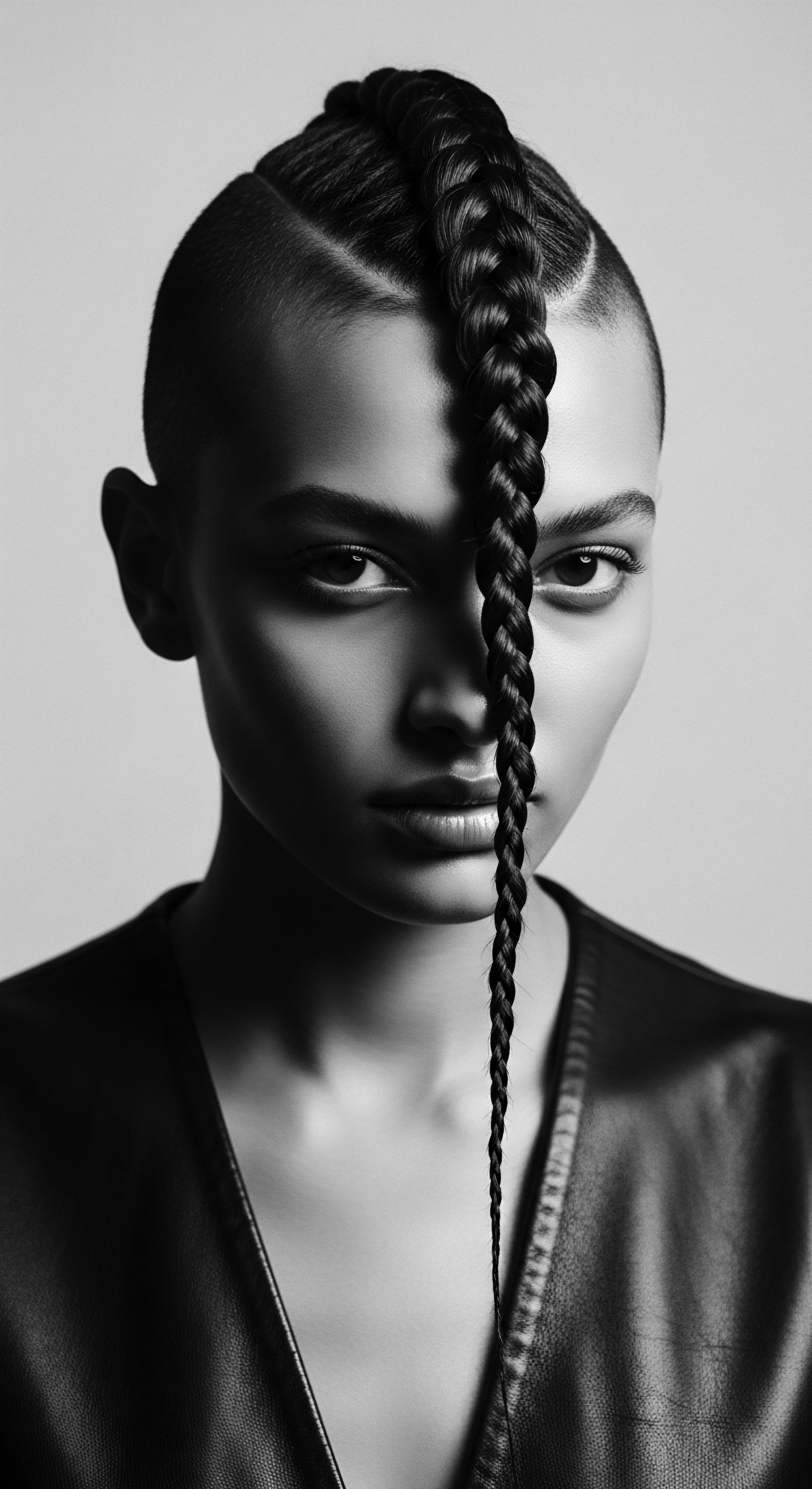
The Language of Hair in Ancestral Societies
In pre-colonial African societies, hair was a sophisticated visual language. Styles communicated a person’s age, marital status, tribal affiliation, social rank, wealth, and even their emotional state or religious beliefs. The complexity of these Styling Practices was a testament to the skill and artistry of those who performed them, often as communal rituals that strengthened social bonds. For instance, among the Yoruba people of Nigeria, specific hairstyles like Sùkú, a raised, basket-like braid, symbolized sophistication and was often worn by young women and brides during significant ceremonies.
The Ìpàkó-Elédè, with hair braided backward, indicated youth and vitality, suitable for daily wear or traditional events. These were not just adornments; they were deliberate markers of identity and belonging, shaping the individual’s place within the collective. The meaning of these styles was understood implicitly within the community, a shared cultural lexicon woven into every strand.
The importance of hair was so profound that in some West African societies, neglecting one’s hair or having an unkempt appearance could imply mental illness or immorality. This underscores the deeply embedded cultural value placed on Styling Practices as a reflection of personal and communal well-being. The Akan people in Ghana held the belief that “The glory of a woman is her hair,” emphasizing the immense care and time dedicated to hair beauty culture practices.

Styling as a Form of Resistance and Resilience
The transatlantic slave trade marked a brutal attempt to erase African identity, often beginning with the forced shaving of captives’ heads upon capture and transport. This act was a deliberate attempt to strip individuals of their cultural markers and dehumanize them, severing their connection to their heritage. Yet, even under the most oppressive conditions, Styling Practices persisted as a powerful act of resistance and cultural preservation.
Enslaved African women ingeniously adapted traditional braiding techniques, sometimes weaving seeds or rice into their hair for survival during the Middle Passage, or using intricate patterns to communicate escape routes and maps for freedom. This demonstrates the profound adaptability and hidden meaning embedded within these practices.
During periods of immense oppression, Styling Practices became a clandestine language, a visual testament to an unyielding spirit and a powerful vehicle for ancestral knowledge and liberation.
The enduring legacy of these practices is evident in the terminology itself; “cornrows,” for example, received their name from enslaved people in North America who recognized their resemblance to rows of corn in a field. This simple act of naming reflects a continuous thread of cultural connection despite forced displacement. The mid-20th century saw a resurgence of natural hairstyles, particularly the Afro, as a symbol of Black pride, a rejection of Eurocentric beauty standards, and a powerful statement during the Civil Rights and Black Power movements. These Styling Practices became visible declarations of self-acceptance and political awakening.

Tools and Techniques ❉ A Heritage of Innovation
The implements used in Styling Practices also tell a story of innovation and resourcefulness. From ancient wooden, bone, and ivory combs found in Kush and Kemet, often adorned with symbols of tribal identity or spiritual meaning, to the later adaptation of available materials during slavery, these tools are integral to the narrative of textured hair care. Early African hair care involved homemade products of oils, butters, milks, powders, and resins, often designed as leave-on conditioners for growth, strength, and curl enhancement.
For example, a traditional Chadian practice involves applying a paste made from Chebe Seeds, cherry seeds, and cloves to the hair, believed to promote length and luster, a ritual passed down through generations. The ongoing use of natural ingredients like shea butter, moringa oil, and carapa oil by ethical African brands today represents a return to ancestral wisdom and a celebration of natural hair care.
The table below illustrates the evolution of hair care tools and their cultural significance, highlighting the continuous journey of Styling Practices for textured hair.
| Era/Origin Ancient Africa (Kush, Kemet) |
| Tool/Practice Wooden, Bone, Ivory Combs |
| Cultural Significance Symbols of tribal identity, rank, fertility, spiritual connection; often buried with owners. |
| Era/Origin Slavery Era (Americas) |
| Tool/Practice Wool Carding Tools, Kerosene, Cornmeal, Animal Fats |
| Cultural Significance Adaptation for detangling and cleansing; often used as a means of survival and cultural preservation. |
| Era/Origin Pre-colonial West Africa |
| Tool/Practice Traditional Braiding Tools, Natural Ingredients (Shea Butter, Moringa Oil) |
| Cultural Significance Communal activity, communication of social status, age, marital status, tribal affiliation. |
| Era/Origin Modern Era (Natural Hair Movement) |
| Tool/Practice Afro Picks (raised fist design), Wide-Tooth Combs, Denman Brushes |
| Cultural Significance Symbols of Black Power, resistance against Eurocentric beauty standards, celebration of natural texture. |
| Era/Origin These tools and practices reflect a continuous lineage of care, innovation, and self-determination within textured hair heritage. |
The intermediate understanding of Styling Practices reveals a dynamic tradition, constantly adapting while holding firm to its ancestral roots. It is a testament to the enduring spirit of Black and mixed-race communities, where hair remains a powerful canvas for cultural expression and a deep wellspring of identity.
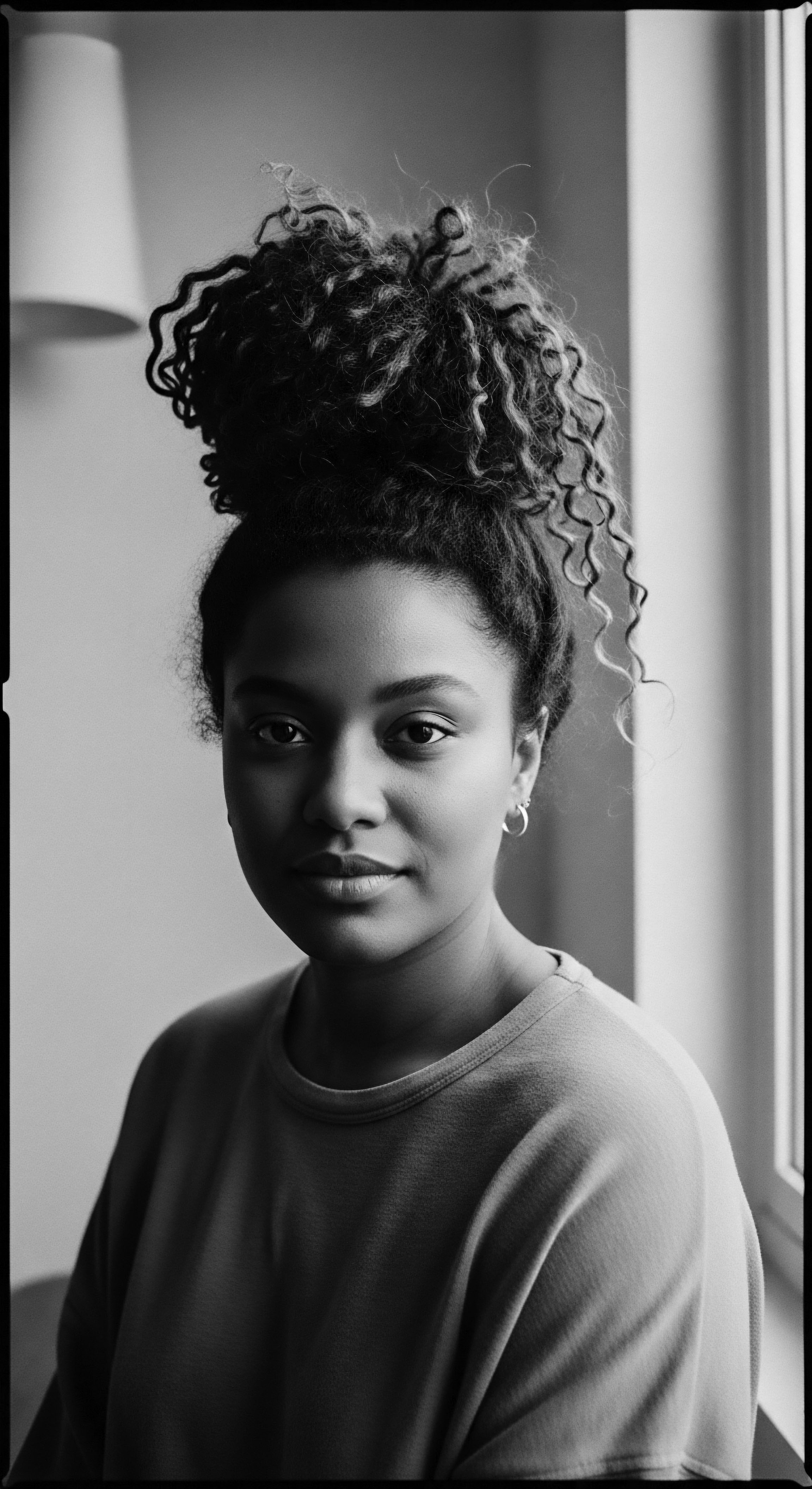
Academic
The academic interpretation of Styling Practices transcends simple description, positioning it as a complex socio-cultural phenomenon deeply interwoven with identity formation, historical oppression, and contemporary expressions of agency within Black and mixed-race communities. This rigorous examination clarifies its designation as a system of embodied knowledge, where aesthetic choices are rarely divorced from their historical, political, and spiritual implications. The meaning of Styling Practices, viewed through this lens, is a dynamic interplay of biological predispositions, inherited traditions, and responses to societal pressures, all contributing to a rich, evolving lexicon of selfhood.
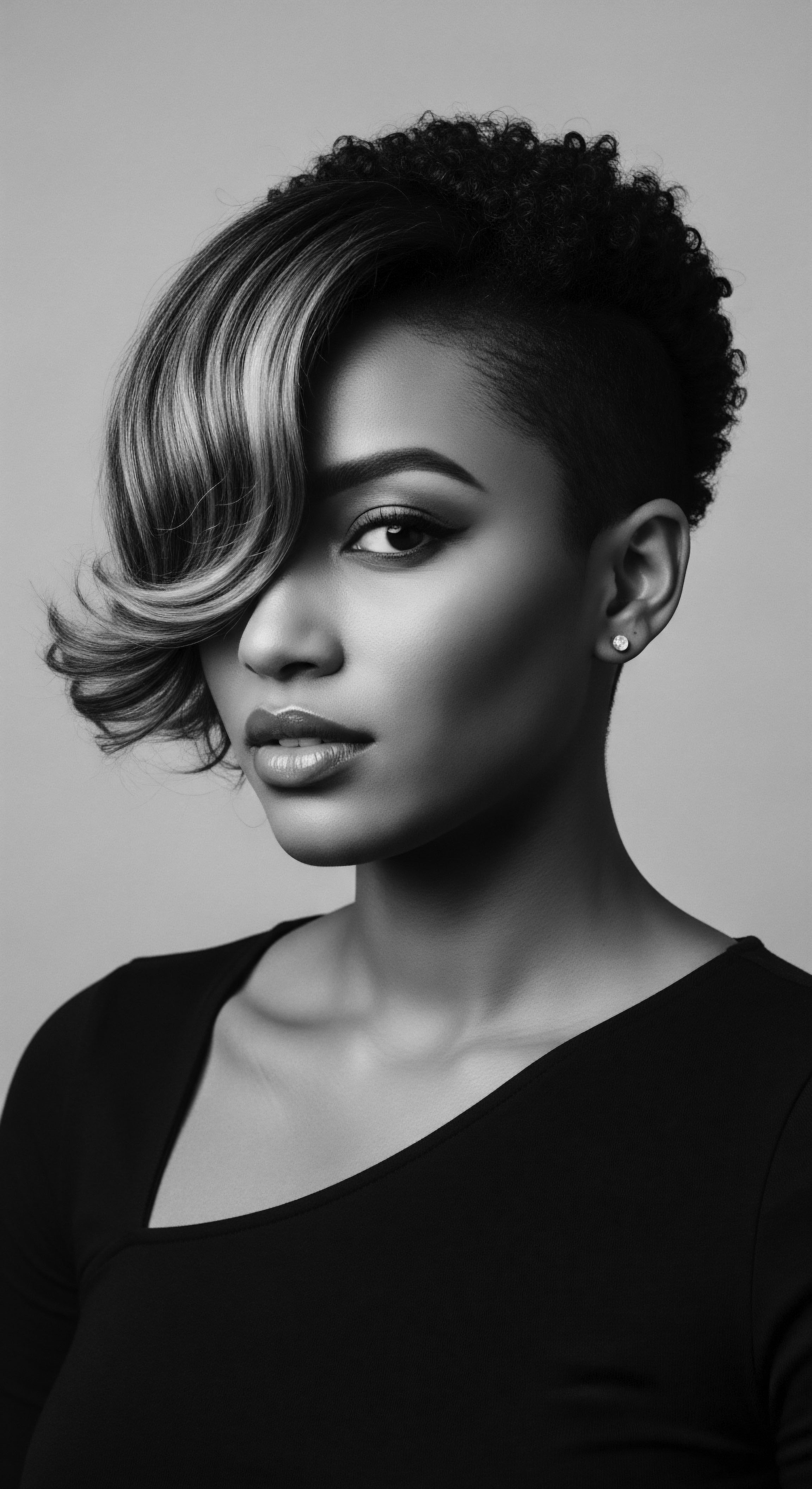
The Epistemology of Hair ❉ Ancestral Knowledge Systems
From an academic perspective, Styling Practices in textured hair communities represent an indigenous epistemology, a way of knowing and transmitting knowledge across generations that predates formal Western education systems. In pre-colonial Africa, hair was not merely an appendage; it was considered a conduit for spiritual interaction, a sacred extension of the self. The head, being the highest point of the body, was often seen as the center of communication and control, intensifying the significance of its adornment.
This spiritual connection informed many Styling Practices, such as the Akan people’s recognition of dreadlocks as a symbol for higher power, reserved for priests and priestesses. The Yoruba deity Osun, associated with hairdressing, exemplifies the divine connection attributed to this craft, highlighting its revered status within traditional belief systems.
The communal nature of hair care, where family and community members engaged in the labor-intensive process of braiding and styling, served as a pedagogical space. It was a setting where oral histories were shared, cultural norms reinforced, and technical skills meticulously passed down. This collective engagement solidified social bonds and ensured the continuity of cultural heritage, demonstrating that Styling Practices were as much about social cohesion as they were about appearance. The traditional significance of Yoruba names for hairstyles, which often celebrated occasions, historical events, or conveyed social commentary, further illustrates this deep cultural embedding.

Styling Practices as a Site of Biopolitical Contest and Identity Affirmation
The transatlantic slave trade fundamentally altered the trajectory of Styling Practices for people of African descent. The forced shaving of hair was a deliberate act of cultural annihilation, a calculated strategy to strip enslaved individuals of their identity and sever their ties to ancestral lands. This historical trauma established a long-standing association of natural Black hair with notions of “unmanageability,” “undesirability,” and “primitiveness” within Eurocentric beauty paradigms. This historical context is crucial for understanding contemporary hair discrimination, which continues to disproportionately affect Black individuals in academic and professional settings.
However, the resilience of Styling Practices in the face of such systematic dehumanization is a powerful case study in agency and cultural persistence. The clandestine use of cornrows to map escape routes during slavery is a compelling example of how hair became a tool for survival and liberation, transforming a cultural practice into a strategic act of resistance. This phenomenon speaks to the concept of “cultural capital,” where traditional practices, though suppressed, retained intrinsic value and became resources for navigating oppressive systems. The contemporary natural hair movement, which advocates for the acceptance and celebration of textured hair in its unadulterated forms, represents a modern manifestation of this historical resistance, a reclaiming of identity and beauty standards rooted in ancestral heritage.
Styling Practices, particularly for textured hair, embody a powerful historical dialectic ❉ a struggle against imposed aesthetics and a tenacious affirmation of selfhood and ancestral connection.
An online survey by World Afro Day found that for one in six Black children, hair discrimination in schools is a problem, highlighting the ongoing need for hair equality in educational environments (De Leon & Chikwendu, 2019, p. 7). This statistic underscores how historical biases regarding textured hair continue to manifest in institutional policies, impacting the well-being and educational experiences of Black youth. The CROWN Act in the US, which bans discrimination based on natural and textured hair, is a legislative response to this enduring issue, recognizing the profound link between hair and racial identity.

Ethnobotany and the Science of Ancestral Hair Care
Academic inquiry into Styling Practices also involves ethnobotanical studies, examining the traditional use of plants for hair care and their scientific efficacy. African communities have long utilized a diverse array of natural ingredients, often sourced locally, for their hair-nourishing properties. These practices, passed down through oral tradition and practical application, represent a sophisticated understanding of plant chemistry and its interaction with hair biology.
For instance, the traditional Chadian practice of using Chebe Seeds for hair growth, a ritual inherited through generations, is a testament to the efficacy of ancestral knowledge. Modern scientific studies are increasingly validating these traditional uses, exploring the compounds within these plants that contribute to hair health, growth, and scalp vitality.
Consider the diverse botanical resources traditionally employed in African hair care:
- Shea Butter (Vitellaria Paradoxa) ❉ Widely used across West Africa, it is renowned for its moisturizing and emollient properties, providing deep conditioning for textured hair.
- Moringa Oil (Moringa Oleifera) ❉ Valued for its rich nutrient profile, including vitamins and minerals, it is used to strengthen hair and promote scalp health.
- Henna (Lawsonia Inermis) ❉ Utilized for centuries by Moroccan women, it is applied to strengthen, revitalize, color, and restore shine to hair, also known for its anti-hair loss and anti-dandruff properties.
- Coconut Oil (Cocos Nucifera) ❉ Applied for general hair care, it helps to moisturize and protect strands.
- Rosemary (Rosmarinus Officinalis) ❉ Used in infusions or decoctions, it is traditionally applied against hair loss and for overall hair care.
The academic examination of Styling Practices therefore reveals a continuum of knowledge, from ancient wisdom to contemporary scientific validation. It clarifies that these practices are not merely aesthetic choices, but deeply meaningful expressions of cultural heritage, resilience, and an enduring connection to the elemental biology of textured hair.

Reflection on the Heritage of Styling Practices
As we contemplate the expansive journey of Styling Practices, from elemental biology to profound cultural expression, we are reminded that hair, particularly textured hair, is a living chronicle. It bears the imprints of ancient suns, the whispers of ancestral voices, and the echoes of resilience across continents. The ‘Soul of a Strand’ ethos, Roothea’s guiding light, finds its truest manifestation in this understanding ❉ that every curl and coil is not merely a physical attribute, but a repository of heritage, a vibrant testament to the enduring spirit of Black and mixed-race communities.
The practices of shaping and adorning hair, often born from necessity and honed by artistry, have consistently served as a language of belonging, a declaration of self in the face of erasure. From the communal rituals in pre-colonial villages, where intricate braids denoted status and spirituality, to the hidden messages woven into cornrows during the trials of the transatlantic slave trade, hair has been a steadfast companion in the human story. It has absorbed the pain of oppression and radiated the joy of liberation, standing as an unwavering symbol of identity.
Today, as individuals reclaim and celebrate their natural textures, they are not simply adopting a style; they are engaging in an act of profound remembrance. They are honoring the hands that cared for hair through generations, the wisdom that understood the power of natural ingredients, and the defiant spirit that refused to be silenced. This continuous thread, linking past and present, illuminates the enduring significance of Styling Practices as a cornerstone of cultural continuity. It is a beautiful, tangible connection to an unbroken lineage of care, creativity, and self-love, ensuring that the heritage of textured hair continues to flourish, unbound and radiant, for all time.

References
- ADJOAA. (2024, February 8). The Recent History of Hair in Afro-American Culture.
- Byrd, A. & Tharps, L. L. (2001). Hair Story ❉ Untangling the Roots of Black Hair in America. St. Martin’s Press.
- De Leon, L. & Chikwendu, K. (2019). Hair Discrimination in Schools ❉ A World Afro Day Report. World Afro Day.
- Essel, K. (2017). Afrocultural aesthetics. (Doctoral dissertation). Kwame Nkrumah University of Science and Technology.
- Essel, K. (2021). Dansinkran Hairstyle Fashion and Its Socio-Cultural Significance in Akan Traditional Ruling. Journal of Culture, Society and Development, 49, 39-46.
- Heaton, S. (2021). Hair ❉ Public, Political, Extremely Personal. Bloomsbury Academic.
- Johnson, K. A. & Bankhead, T. J. (2014). Black Hair ❉ A Cultural History. Lexington Books.
- Mageo, J. (1996). The Social Construction of the Person. Cambridge University Press.
- Matjila, C. R. (2020). The meaning of hair for Southern African Black women. (Master’s thesis). University of the Free State.
- Mercer, K. (1987). Black Hair/Style Politics. New Formations, 3, 33-52.
- Molebatsi, M. (2009). The Politics of Black Hair. University of South Africa.
- Patton, M. (2006). Hair Story ❉ Untangling the Roots of Black Hair in America. St. Martin’s Press.
- Powe, L. (2009). The History of Black Hair ❉ From the Early Days to the Present .
- Simon, D. (2021). Hair ❉ Public, Political, Extremely Personal. Bloomsbury Academic.
- Weitz, R. (2004). Rapunzel’s Daughters ❉ What Women’s Hair Tells Us About Women’s Lives. Farrar, Straus and Giroux.
